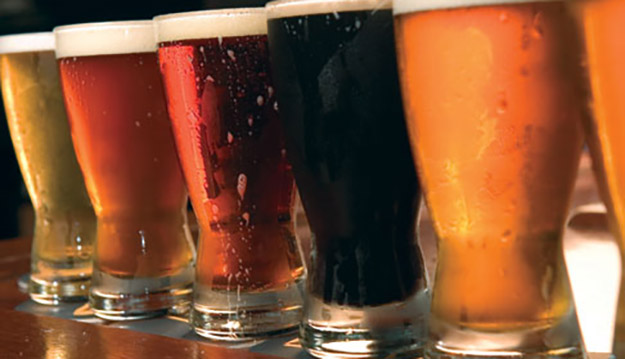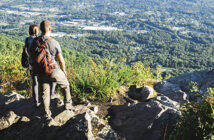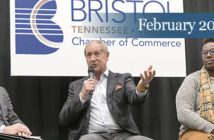By Scott Robertson
The Brewers Association statistics that define the craft beer boom in America since 2010 are mind-boggling. More than 6,850 breweries exist today in a marketplace that less than six years ago had fewer than 2,500 and saw two brewing companies (Anheuser-Busch InBev and MillerCoors) control a 90 percent share. While overall beer sales were flat from 2015 to 2016, craft beer* sales rose 6.2 percent in the same period. Another 1,200 breweries are in the preparation stages.
In Tennessee, at the end of 2016, 66 breweries were operational, taking more than 250,000 barrels of craft beer to market per year. In Virginia, 164 breweries produced a little more than 257,000 barrels.
The booming market got even more good news at the end of 2017. The federal tax reform package passed in December included a two-year provision of the Craft Beverage Modernization and Tax Reform Act that lowers the federal excise tax for breweries to $3.50/barrel (from $7/barrel) on the first 60,000 barrels for domestic brewers producing less than 2 million barrels annually. Still, Tennessee has the highest tax rates on beer in America.
And despite all the good news, Tri-Cities-based brewers are of a common mind that the current industry growth levels are not only unsustainable, they likely presage a significant market correction.
“Starting a brewery is easy,” says Erich Allen, founder of Studio Brew. He then raises an eyebrow to make the point that everything after that gets harder very, very fast. For instance, he says, when InBev or one of the other large companies buys a craft brewer that hits 70,000 barrels production per year, that operation then starts squeezing smaller brewers out of retail shelf space.
Chris Burcher, brewer and president at Wolf Hills Brewing Co., in Abingdon, Va., greeted The Business Journal’s call with, “If you’re looking to do a story on how great the craft beer boom is going, I’m probably not your guy. There’s a whole other story that’s not gloom and doom, but it’s not $1 million either.”
“There’s still this idea that craft brewing is golden and shiny and anybody can make it work, but the reality is those days have long since passed, says Cameron Bell of Wolf Hills, “There was a time when you just needed to make beer. Now, if you don’t have great beer, well that’s the baseline now.”
Burcher also points to the rising amount of used brewing equipment available from breweries having to cut costs or shut down entirely as another sign the market is correcting.
“You have folks like Sleepy Owl who are watching their costs, and that’s great,” says Bell. “But then there are so many who aren’t doing that. If you want to talk about a bubble, that is definitely where the bubble is in the craft brewing industry. There is going to be a blood-letting sometime.”
Allen doesn’t see a bursting bubble, but rather a more gradual correction, with breweries that offer lower quality products simply falling out of the market over time. “As my grandmother would say, there’s a shaking of the rug to get the bugs out. You can’t go into this anymore just making good beer. It has to be great beer all the time. It has to be the best you can produce.”
“We make beer,” he says, leaning back into a leather couch, shrugging and offering a laid-back grin. “So at the worst particular moment in our lives, we still make beer.”
*The Brewers Association defines craft breweries as, “small, independent and traditional.”

Jeff Derby, Jeff Keeling and Jeff Williams (Photo by Scott Robertson)
Sampling the local brews with The Three Jeffs
With local brewers in agreement that quality will determine which breweries thrive in the future, The Business Journal assigned the crack team known as The Three Jeffs to sample brews from several of the leading craft breweries in the region. Co-publisher Jeff Derby is a pilsner enthusiast with admittedly the most pedestrian palate of the three. Director of Business Development and Marketing Jeff Williams has a broader range, with a fondness for porters and stouts, though he imbibes less frequently than his colleagues. Associate Editor Emeritus Jeff Keeling is the most knowledgeable of The Three Jeffs, if only because he knows IBUs is neither a medical term nor a baseball statistic. Ratings are given on a scale of one to three “Jeffs.” Our Three Jeffs were accompanied on their tour of craft breweries by Managing Editor and Designated Driver Scott Robertson. The Business Journal reminds you to always sample responsibly.
Sleepy Owl Brewery, Kingsport
Centennial Stout: This 4.7 percent alcohol by volume (ABV) Nitro Dry Irish Stout is surprisingly light. It’s a beer one could imagine drinking after mowing the yard in the summer but with about the same kick as the Anheuser Busch products generally thought of in that setting. Maybe it was just the day we went, but all the Sleepy Owl brews we sampled were a tad bit flat. This was the best of the lot.

Wolf Hills Brewing Co., Abingdon
White Blaze Honey Cream Ale, 4.6 percent ABV. Goes against the grain of the current sour beer trend with a sweet, round flavor. Like the Sleepy Owl stout, lighter than one might expect, especially from a sweeter beer. We suspect it’s not the favorite beer of afficianados, but we also bet is sells like hotcakes.
 Wolf’s Den Double IPA, 8 percent ABV. The body and flavor of this 100 IBU offering are both strong, and in a good way. Pretty hoppy, but not overbearingly so. Compares favorably to the Highland IPA out of North Carolina.
Wolf’s Den Double IPA, 8 percent ABV. The body and flavor of this 100 IBU offering are both strong, and in a good way. Pretty hoppy, but not overbearingly so. Compares favorably to the Highland IPA out of North Carolina.
 Martha Washington ESB, 4.8 percent ABV. The bartender said we might taste toffee. Actually we got hints of tobacco. Wheaty and Earthy.
Martha Washington ESB, 4.8 percent ABV. The bartender said we might taste toffee. Actually we got hints of tobacco. Wheaty and Earthy.

Studio Brew, Bristol
Dancing Monk Belgian Ale, 8.5 percent ABV. A very complex beer. There’s a lot going on here. Jeff Williams said the spices reminded him of an Easter ham. We started to cut him off when he said that, but the spices are apparent, and yes there is a hint of clove. It’s woody, dry and worthy of drinking with someone else just to talk about it while you drink.

Dark Rider Double Black IPA, 8.8 percent ABV. Tasty, solid and smooth. A high gravity beer for the non-high grav drinker.

The Ferguson Oatmeal Chocolate Milk Stout, 6.1 percent APV. Jeff Keeling, who is choosy about stouts, likes this one a lot, as does Jeff Williams, who enjoyed the coffee overtones.

Yee-Haw Brewing Co., Johnson City
Dunkel Munich-style dark beer, 5.5 percent ABV. Not surprisingly, this is the best seller at Yee-Haw. It’s a darker beer that’s approachable for those who don’t usually do dark.

Eighty Scottish Export 80 Schilling, 5.0 percent ABV. The 80 certainly doesn’t offend, but it doesn’t particularly excite either. The very accessible taste reminded Jeff Derby of Killian’s Red.

Pale Ale, 5.7 percent ABV. Jeff Keeling rates it, “perfectly adequate,” comparing it to the Sweetwater 420. It’s a little flowery for Jeff Derby.





